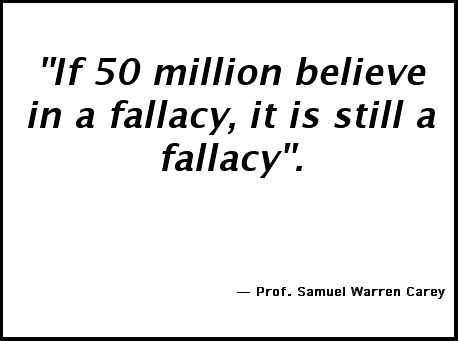1. If humans came from apes, why aren’t apes evolving into humans?
Humans, apes, and monkeys are only distant evolutionary “cousins.” We come not from apes but from a common ancestor that was neither ape nor human that lived millions of years in the past. In fact, during the last seven million years many human-like species have evolved; some examples include Homo habilis, Homo erectus, and Homo neanderthalensis. All of these went extinct at different times, leaving just us to share the planet with a handful of other primates.
 2.There are too many gaps in the fossil record for evolution to be true.
2.There are too many gaps in the fossil record for evolution to be true.
In fact, there are lots of intermediate fossils. Archaeopteryx, for example, is one of the earliest known fossil birds with a reptilian skeleton and feathers. There is now evidence that some dinosaurs had hair and feathers. Therapsids are the intermediates between reptiles and mammals, Tiktaalik is an extinct lobe-finned fish intermediate to amphibians, there are now at least six intermediate fossil stages in the evolution of whales, and in human evolution there are at least a dozen intermediate fossil stages since hominids branched off from the great apes six million years ago. Considering the exceptionally low probability that a dead plant or animal will fossilize it is remarkable we have as many fossils as we do. First the dead animal has to escape the jaws of scavengers. Then is has to be buried under the rare circumstances that will cause it to fossilize instead of decay. Then geological forces have to somehow bring the fossil back to the surface to be discovered millions of years later by the handful of paleontologists looking for them.
 3.No one has ever seen evolution happen.
3.No one has ever seen evolution happen.
Evolution is a historical science confirmed by the fact that so many independent lines of evidence converge to this single conclusion. Independent sets of data from geology, paleontology, botany, zoology, biogeography, comparative anatomy and physiology, genetics, molecular biology, developmental biology, embryology, population genetics, genome sequencing, and many other sciences each point to the conclusion that life evolved. Creationists demand “just one fossil transitional form” that shows evolution. But evolution is not proved through a single fossil. It is proved through a convergence of fossils, along with a convergence of genetic comparisons between species, and a convergence of anatomical and physiological comparisons between species, and many other lines of inquiry. (In fact we can see evolution happen—especially among organisms with short reproductive cycles that are subject to extreme environmental pressures. Knowledge of the evolution of viruses and bacteria is vital to medical science.)
4.If evolution happened gradually over millions of years why doesn’t the fossil record show gradual change?
Sudden changes in the fossil record are not missing evidence of gradualism; they are extant evidence of punctuation. Species are stable over long periods of time and so they leave plenty of fossils in the strata while in their stable state. The change from one species to another, however, happens relatively quickly (on a geological time scale) in a process called punctuated equilibrium. One species can give rise to a new species when a small “founder” group breaks away and becomes isolated from the ancestral group. This new founder group, as long as it remains small and detached, may experience relatively rapid change (large populations are genetically stable). The speciational change happens so rapidly that few fossils are left to record it. But once changed into a new species, the individuals will retain their phenotype for along time, leaving behind many well-preserved fossils. Millions of years later this process results in a fossil record that records mostly stability. The punctuation is there in between the equilibrium.
 5.Science claims that evolution happens by random chance
5.Science claims that evolution happens by random chance
Natural selection is not “random” nor does it operate by “chance.” Natural selection preserves the gains and eradicates the mistakes. To illustrate this, imagine a monkey at a typewriter. In order for the monkey to type the first 13 letters of Hamlet’s soliloquy by chance, it would take 2613 number of trials for success. This is 16 times as great as the total number of seconds that have elapsed in the lifetime of the solar system. But if each correct letter is preserved and each incorrect letter eradicated, the phrase “tobeornottobe” can be “selected for” in only 335 trials, or just seconds in a computer program. Richard Dawkins defines evolution as “random mutation plus nonrandom cumulative selection.” It is the cumulative selection that drives evolution. The eye evolved from a single, light sensitive spot in a cell into the complex eye of today not by chance, but through thousands of intermediate steps, each preserved because they made a better eye. Many of these steps still exist in nature in simpler organisms.
6.Only an Intelligent Designer could have made something as complex as an eye
The anatomy of the human eye shows that it is anything but “intelligently designed.” It is built upside down and backwards, with photons of light having to travel through the cornea, lens, aqueous fluid, blood vessels, ganglion cells, amacrine cells, horizontal cells, and bipolar cells, before reaching the light sensitive rods and cones that convert the light signal into neural impulses, which are then sent to the visual cortex at the back of the brain for processing into meaningful patterns. For optimal vision, why would an intelligent designer have built an eye upside-down and backwards? This “design” only makes sense if natural selection built eyes from available materials, and in the particular configuration of the ancestral organism’s pre-existing organic structures. The eye shows the pathways of evolutionary history, not intelligent design
 7.Evolution is only a theory
7.Evolution is only a theory
All branches of science are based on theories, which are grounded in testable hypothesis and explain a large and diverse body of facts about the world. A theory is considered robust if it consistently predicts new phenomena that are subsequently observed. Facts are the world’s data. Theories are explanatory ideas about those data. Constructs and other non testable statements are not a part of science. The theory of evolution meets all the criteria of good science, as determined by Judge William Overton in the Arkansas creationism trial:
• It is guided by natural law.
• It has to be explanatory by reference to natural law.
• It is testable against the empirical world.
• Its conclusions are tentative.
• It is testable and falsifiable.
If you can find fossil mammals in the same geological strata as trilobites then evolution would be falsified. No one has ever found such contradictory data.
8.Evidence for Human Evolution Has Turned Out to Be Fake, Frauds, or Fanciful
Eager to discredit evolution, creationists ignore hominid fossil discoveries and cherry pick examples of hoaxes and mistakes in the belief that mistakes in science are a sign of weakness. This is a gross misunderstanding of the nature of science, which constantly advances by using both its mistakes and the successes. Its ability to build cumulatively on the past is how science progresses. The self-correcting feature of the scientific method is one of its most powerful assets. Hoaxes like Piltdown man, and honest mistakes like Nebraska Man, Calaveras Man, and Hespero-pithecus, are, in time, corrected. In fact, it wasn’t creationists who exposed these errors; it was scientists who did so. Creationists simply read about the scientific exposé of these errors, and then duplicitously claimed them as their own.
9.The second law of thermodynamics proves that evolution is impossible
The Second Law of Thermodynamics applies to closed, isolated systems. Since the Earth receives a constant input of energy from the sun—it is an open-dissipative system—entropy may decrease and order increase (though the sun itself is running down in the process).Thus, the Earth is not strictly a closed system and life may evolve without violating natural law. As long as the sun is burning, life may continue thriving and evolving, just like automobiles may be prevented from rusting, burgers can be heated in ovens, and all manner of things in apparent violation of Second Law entropy may continue. But as soon as the sun burns out, entropy will take its course and life on Earth will cease.
10.Evolution can’t account for morality
As a social primate species we evolved a deep sense of right and wrong in order to accentuate and reward reciprocity and cooperation, and to attenuate and punish excessive selfishness and free riding. As well, evolution created the moral emotions that tell us that lying, adultery, and stealing are wrong because they destroy trust inhuman relationships that depend on truthtelling, fidelity, and respect for property. It would not be possible for asocial primate species to survive without some moral sense. On the constitution of human nature is built the constitutions of human societies.
Source: 2010 Skeptics Society
 It is easy to see wherein lies the resemblance between neurotic ceremonial and religious rites; it is in the fear of pangs of conscience after their omission, in the complete isolation of them from all other activities (the feeling that one must not be disturbed), and in the conscientiousness with which the details are carried out. But equally obvious are the differences, some of which are so startling that they make the comparison into a sacrilege: the greater individual variability of neurotic ceremonial in contrast with the stereotyped character of rites (prayer, orientation, etc.); it’s private nature as opposed to the public and communal character of religious observances; especially, the distinction that the little details of religious ceremonies are full of meaning and the understood symbolically, while those of neurotics seem silly and meaningless. In this respect an obsessional neurosis furnishes a tragic-comic travesty of a private religion. But this, the sharpest distinction between neurotic and religious ceremonials, disappears as soon as one penetrates by means of psychoanalytic investigation to insight into obsessive actions. By this process the outward appearance of being foolish and meaningless, which is characteristic of obsessive acts, is completely demolished, and the fact of their having this appearance is explained. It is found that obsessive acts are throughout and in all their details full of meaning, that they serve important interests of the personality, and that they give expression both to persisting impressions of previous experiences and to thoughts about them which are strongly charged with affect. This they do in two ways, either by direct or symbolic representation, so that they are to be interpreted either historically or symbolically.
It is easy to see wherein lies the resemblance between neurotic ceremonial and religious rites; it is in the fear of pangs of conscience after their omission, in the complete isolation of them from all other activities (the feeling that one must not be disturbed), and in the conscientiousness with which the details are carried out. But equally obvious are the differences, some of which are so startling that they make the comparison into a sacrilege: the greater individual variability of neurotic ceremonial in contrast with the stereotyped character of rites (prayer, orientation, etc.); it’s private nature as opposed to the public and communal character of religious observances; especially, the distinction that the little details of religious ceremonies are full of meaning and the understood symbolically, while those of neurotics seem silly and meaningless. In this respect an obsessional neurosis furnishes a tragic-comic travesty of a private religion. But this, the sharpest distinction between neurotic and religious ceremonials, disappears as soon as one penetrates by means of psychoanalytic investigation to insight into obsessive actions. By this process the outward appearance of being foolish and meaningless, which is characteristic of obsessive acts, is completely demolished, and the fact of their having this appearance is explained. It is found that obsessive acts are throughout and in all their details full of meaning, that they serve important interests of the personality, and that they give expression both to persisting impressions of previous experiences and to thoughts about them which are strongly charged with affect. This they do in two ways, either by direct or symbolic representation, so that they are to be interpreted either historically or symbolically. It is easy to see wherein lies the resemblance between neurotic ceremonial and religious rites; it is in the fear of pangs of conscience after their omission, in the complete isolation of them from all other activities (the feeling that one must not be disturbed), and in the conscientiousness with which the details are carried out. But equally obvious are the differences, some of which are so startling that they make the comparison into a sacrilege: the greater individual variability of neurotic ceremonial in contrast with the stereotyped character of rites (prayer, orientation, etc.); it’s private nature as opposed to the public and communal character of religious observances; especially, the distinction that the little details of religious ceremonies are full of meaning and the understood symbolically, while those of neurotics seem silly and meaningless. In this respect an obsessional neurosis furnishes a tragic-comic travesty of a private religion. But this, the sharpest distinction between neurotic and religious ceremonials, disappears as soon as one penetrates by means of psychoanalytic investigation to insight into obsessive actions. By this process the outward appearance of being foolish and meaningless, which is characteristic of obsessive acts, is completely demolished, and the fact of their having this appearance is explained. It is found that obsessive acts are throughout and in all their details full of meaning, that they serve important interests of the personality, and that they give expression both to persisting impressions of previous experiences and to thoughts about them which are strongly charged with affect. This they do in two ways, either by direct or symbolic representation, so that they are to be interpreted either historically or symbolically.
It is easy to see wherein lies the resemblance between neurotic ceremonial and religious rites; it is in the fear of pangs of conscience after their omission, in the complete isolation of them from all other activities (the feeling that one must not be disturbed), and in the conscientiousness with which the details are carried out. But equally obvious are the differences, some of which are so startling that they make the comparison into a sacrilege: the greater individual variability of neurotic ceremonial in contrast with the stereotyped character of rites (prayer, orientation, etc.); it’s private nature as opposed to the public and communal character of religious observances; especially, the distinction that the little details of religious ceremonies are full of meaning and the understood symbolically, while those of neurotics seem silly and meaningless. In this respect an obsessional neurosis furnishes a tragic-comic travesty of a private religion. But this, the sharpest distinction between neurotic and religious ceremonials, disappears as soon as one penetrates by means of psychoanalytic investigation to insight into obsessive actions. By this process the outward appearance of being foolish and meaningless, which is characteristic of obsessive acts, is completely demolished, and the fact of their having this appearance is explained. It is found that obsessive acts are throughout and in all their details full of meaning, that they serve important interests of the personality, and that they give expression both to persisting impressions of previous experiences and to thoughts about them which are strongly charged with affect. This they do in two ways, either by direct or symbolic representation, so that they are to be interpreted either historically or symbolically.




























